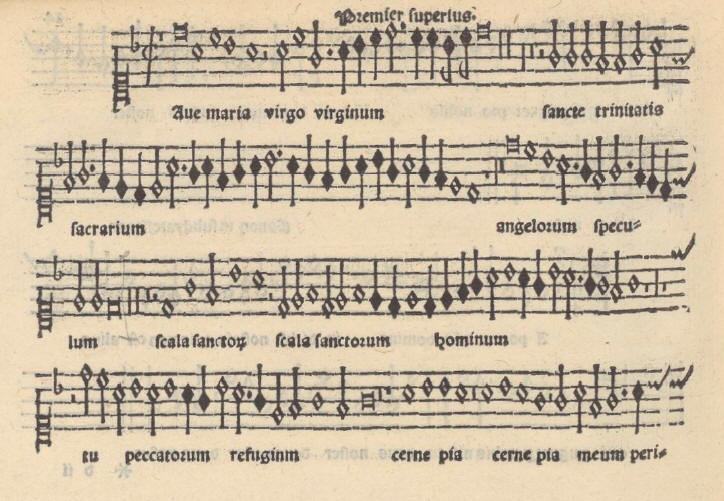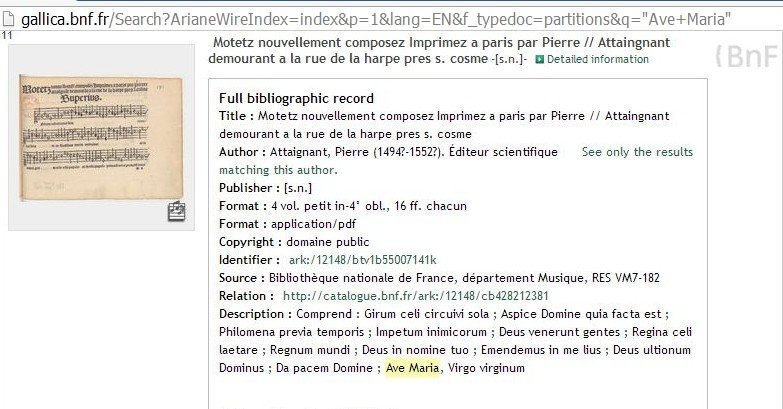Attaignant, Pierre - Ave Maria virgo virginum
 for 6 vv. SST cT BB a cappella
for 6 vv. SST cT BB a cappella
 |
Composer: Pierre Attaignant (1494c-1552c) Aliases, aka:Pierre Attaignant, Pierre Atteignant, Pierre Attingens, Pierre Ataignant, Pierre Attaingnãt, Petrus Attaingnant Country of origin / activity: France |
|
| Text author: traditional | ||
| Arranger / Editor: N/A |
Available documentation:
Score: free download available at www.gallica.bnf.fr |
Lyrics: (source)
| not available |
| MIDI: not available | MP3: not available |
| Recording: |
| not available |
Video - posted on YouTube:
| not available at this time | YOU could be featured here! If you or your choir perform this Ave Maria, make a video recording. Post your video on YouTube, email me the page URL and I'll embed the video in this page. |
Internet references, biography information:
| source of this score: www.gallica.bnf.fr |
 |
|
From Wikipedia, the free encyclopedia Works Apart from his 36 collections of chansons, he also published books with pieces in lute or keyboard tablature, as well as Masses and motets. Among the most important documents for the keyboard music in general and in French Renaissance keyboard music in particular are the seven volumes published by Attaingnant in Paris, in the Spring of 1531: 1.Dixneuf chansons musicales reduictes en la tabulature des Orgues Espinettes Manichordions, et telz semblables instrumentz musicaulx... Idibus Januraii 1530 (sic). "Donna ti voglio cantare" by Italian singer-songwriter Angelo Branduardi, recorded in his 1979 album Cogli la prima mela; "Eternal Wait" by Finnish Folk metal band "Ensiferum"; |
| http://www.amaranthpublishing.com/Printers.htm |
|
Pierre Attaignant (b. c. 1494, Douai?, France d. 1551/52, Paris) was the son-in-law and heir of the printer-engraver Philippe Pigouchet (fl. 1490-1514). Beginning with a collection of chansons dated April 4, 1527, he used movable type and a single impression, a method that was probably his invention (earlier printers printed the staff and the notes in separate impressions.) Before 1527 Attaignant began using a newly invented moveable music type, in which a fragment of a musical staff was combined with a note on each piece of type. He used the new type in a book of chansons, Chansons Nouvelles (1528). Because Attaignant's single-impression method halved the time and labour formerly needed to print music, it was quickly adopted throughout Europe. Attaignant was the first to use the printing press to achieve mass production in music publishing. In 1537 he became music printer and bookseller to the French king Francis I. His printing represents more than 150 outstanding composers of his day and include chansons, dance collections, masses, motets, psalms, and Passions. His 111 surviving publications are rich in information about early 16th-century music. |
 avemariasongs
avemariasongs org
org